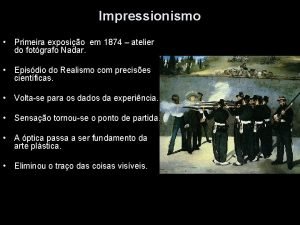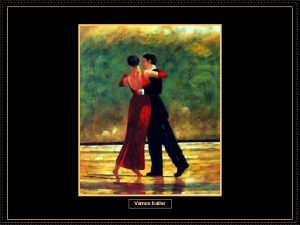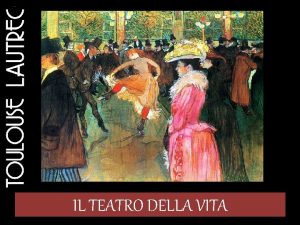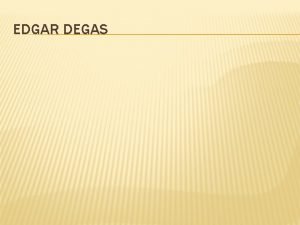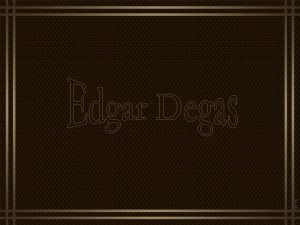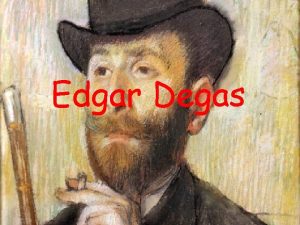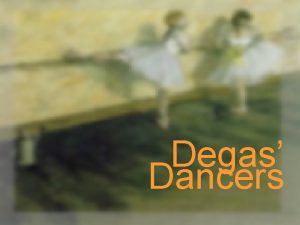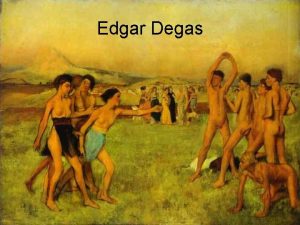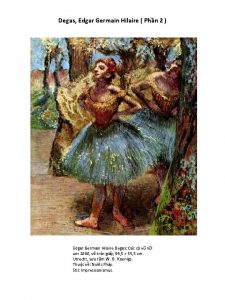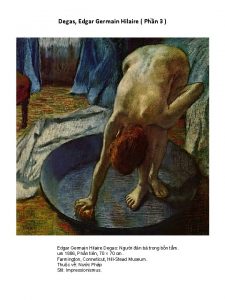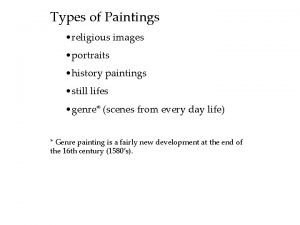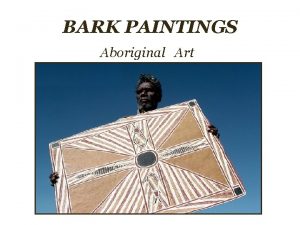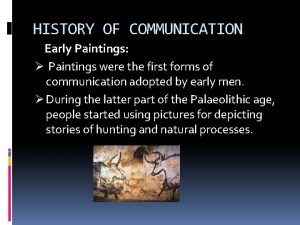Edgar Degas Paintings that Move Edgar Degas He

















- Slides: 17

Edgar Degas Paintings that Move

Edgar Degas He was born in July 1834 in Paris, France (that was 180 years ago!) He is one of the most famous painters ever. He is known as an Impressionist artist. That means he liked to try to catch different kinds of light in his paintings. Self Portrait by Degas, 1855

Edgar Degas • • Raise your hand if you know what repetition is? A Cotton Office in New Orleans, 1873

Edgar Degas • • Repetition is when a shape or color is repeated over and over. Repetition also happens in music and sound too. Do you see a shape or color that is repeated? A Cotton Office in New Orleans, 1873

Edgar Degas • • What is all the white stuff on the table? What do you think they did with it and why? A Cotton Office in New Orleans, 1873

Edgar Degas • • • The cotton was how people made money in the 1800’s. The first cotton gin (engine) was already invented and made it easier for cotton to be sold for cloth. This is actually the first painting Degas sold and gave him the reputation of a serious artist! Artists record history with their artwork. A Cotton Office in New Orleans, 1873

Edgar Degas-Ballet • • Ballet Rehearsal by Edgar Degas, 1873, The Fogg Art Museum, Massachusetts Notice how Degas invites you into the painting by having the musician in the foreground (front). We can only see part of him. Then he repeats his dancers in similar dynamic poses.

Edgar Degas-Ballet • • Ballet Rehearsal by Edgar Degas, 1873, The Fogg Art Museum, Massachusetts Dynamic means interesting, not straight and boring. Can you stand up and stretch your arms and legs into an interesting dynamic pose? Think of a snap shot of a karate class, soccer game, or cheerleading practice.

Edgar Degas-Ballet • • • Stage Rehearsal by Edgar Degas, 1878 -1879, The Metropolitan Museum of Art, New York City What is in the foreground (front) here? Are shapes and colors repeated again? The repetition gives us a sense of movement.

Edgar Degas-Ballet • • Stage Rehearsal by Edgar Degas, 1878 -1879, The Metropolitan Museum of Art, New York City Did you notice in each picture we’ve seen there are windows repeated? The Impressionist artists loved to paint in natural lighting to see how colors changed when light changed.

Edgar Degas-Horses • • • Another subject Degas liked to paint was horses. See the overlapping going back into the background? This is what we are going to be doing with our artwork next. Before the Stands by Edgar Degas, 1872, Musee D’ Orsay, Paris

Edgar Degas-Our Picture • • Please come over in a circle around me as I demonstrate how to trace a dynamic shape beginning in the Front or Foreground with the shape part on the page. I have to hold the tracer carefully in place as I use my pencil. I’m being gentle with the tracer since other kids need to use these.

Edgar Degas-Our Picture • • Next I move the tracer back a little but so it is still touching the 1 st shape. Now this time tracing I have to hop around the first shape. NOT DRAW through it. That is how we show overlapping like Degas. (see picture) Next I can flip my shape, move it back a little but so it is still touching the 2 nd and trace again.

Edgar Degas-Our Picture • • • I’m going to keep tracing, moving my shape back into the background and even have it go off the page so we only see part of it. Then I will make sure I print my name in the front edge. Now lets get into a line and choose 1 color paper and a shape for our own artwork.

Edgar Degas-Color and Details • • • Now that I have my shapes traced and my name on paper, I get to use color pencils to draw in detail of my shapes. Where is your scene? I’m going to first draw a little horizontal line under all the feet or tires of my shapes. Then at the back of my picture under my shape in very back, I will draw the horizon line. That is the line the separates the floor from the wall or the grass from the sky. (see picture) Then I will roll up my sleeves and use oil pastels. They are like an oily, soft crayon so I barely have to press to make bright colors. And it looks really neat to blend two color together. • I can even wrap my finger tightly in paper towel and blend to make soft colors like Degas. Just stay in the shape. (see picture)

Edgar Degas-Wrap up • • How many years ago did Degas live? What is it called when one shape is in front of another an we only see part of it? What were the Impressionists trying to catch in their paintings? What is the Foreground?

Edgar Degas-Wrap up Answers • • How many years ago did Degas live? 180 years ago What is it called when one shape is in front of another an we only see part of it? Overlapping What were the Impressionists trying to catch in their paintings? Changes in color with light What is the foreground? Foreground is the front of picture
 Sport winners move backwards and losers move forward
Sport winners move backwards and losers move forward Tìm vết của đường thẳng
Tìm vết của đường thẳng Sau thất bại ở hồ điển triệt
Sau thất bại ở hồ điển triệt Thơ thất ngôn tứ tuyệt đường luật
Thơ thất ngôn tứ tuyệt đường luật Con hãy đưa tay khi thấy người vấp ngã
Con hãy đưa tay khi thấy người vấp ngã Thơ thất ngôn tứ tuyệt đường luật
Thơ thất ngôn tứ tuyệt đường luật Tôn thất thuyết là ai
Tôn thất thuyết là ai Phân độ lown
Phân độ lown Chiến lược kinh doanh quốc tế của walmart
Chiến lược kinh doanh quốc tế của walmart Gây tê cơ vuông thắt lưng
Gây tê cơ vuông thắt lưng Block nhĩ thất độ 2 mobitz 1
Block nhĩ thất độ 2 mobitz 1 Eduard degas
Eduard degas Degas konstnär
Degas konstnär Degas masp
Degas masp La prugna degas
La prugna degas Degas ensayo de ballet
Degas ensayo de ballet Cerchio alla testa lautrec
Cerchio alla testa lautrec La lettura (manet)
La lettura (manet)













